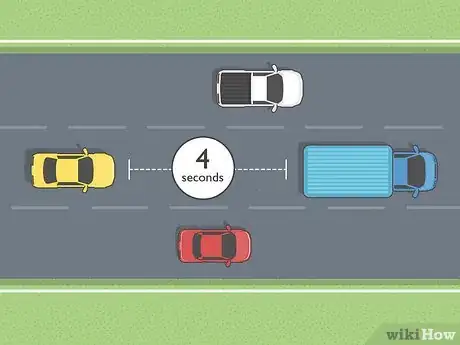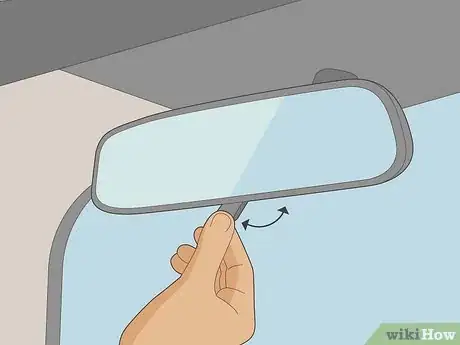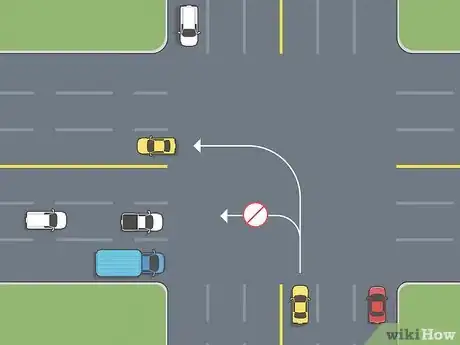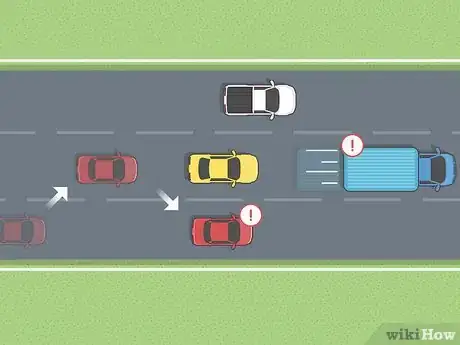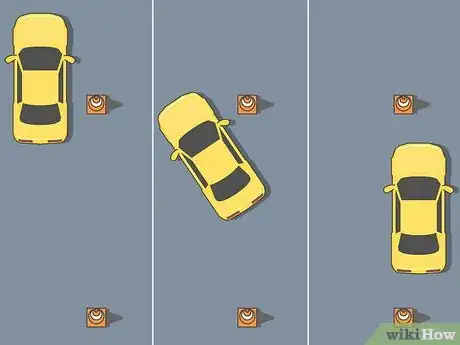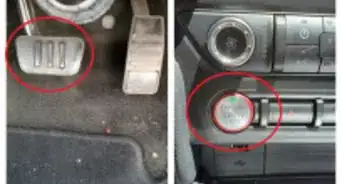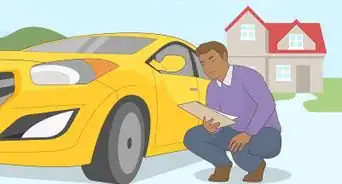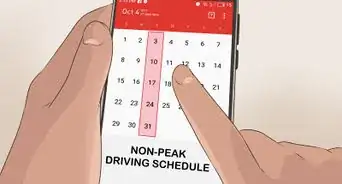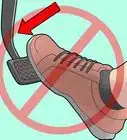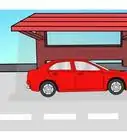This article was co-authored by Ibrahim Onerli and by wikiHow staff writer, Eric McClure. Ibrahim Onerli is a Driving Instructor and the Manager of Revolution Driving School in New York City. His mission is to make the world a better place by teaching safe driving. Ibrahim trains and manages a team of over eight driving instructors. He specializes in teaching defensive driving and stick shift driving.
There are 11 references cited in this article, which can be found at the bottom of the page.
wikiHow marks an article as reader-approved once it receives enough positive feedback. In this case, 100% of readers who voted found the article helpful, earning it our reader-approved status.
This article has been viewed 532,998 times.
Drifting around tight turns while burning rubber is definitely cool in an action movie, but in reality, being a great driver is all about avoiding the need for high-risk maneuvers. If you’re looking to become the best possible driver you can be, there are a ton of tricks, tips, and changes you can implement to improve your skills on the road. Here are a few of the bigger adjustments you can make!
Steps
Expert Q&A
Did you know you can get expert answers for this article?
Unlock expert answers by supporting wikiHow
-
QuestionWhat's the best way to adjust your seat before driving?
 Ibrahim OnerliIbrahim Onerli is a Driving Instructor and the Manager of Revolution Driving School in New York City. His mission is to make the world a better place by teaching safe driving. Ibrahim trains and manages a team of over eight driving instructors. He specializes in teaching defensive driving and stick shift driving.
Ibrahim OnerliIbrahim Onerli is a Driving Instructor and the Manager of Revolution Driving School in New York City. His mission is to make the world a better place by teaching safe driving. Ibrahim trains and manages a team of over eight driving instructors. He specializes in teaching defensive driving and stick shift driving.
Driving Instructor
-
QuestionHow should I deal with aggressive drivers?
 Ibrahim OnerliIbrahim Onerli is a Driving Instructor and the Manager of Revolution Driving School in New York City. His mission is to make the world a better place by teaching safe driving. Ibrahim trains and manages a team of over eight driving instructors. He specializes in teaching defensive driving and stick shift driving.
Ibrahim OnerliIbrahim Onerli is a Driving Instructor and the Manager of Revolution Driving School in New York City. His mission is to make the world a better place by teaching safe driving. Ibrahim trains and manages a team of over eight driving instructors. He specializes in teaching defensive driving and stick shift driving.
Driving Instructor
-
QuestionHow can I stop being afraid of other vehicles?
 Community AnswerJust relax and focus on what you can control while staying mindful of the cars around you. Driving is scary, but the more you drive, the more comfortable you will become with the idea of it. Keep an eye on your mirrors to watch out for other cars nearby as well.
Community AnswerJust relax and focus on what you can control while staying mindful of the cars around you. Driving is scary, but the more you drive, the more comfortable you will become with the idea of it. Keep an eye on your mirrors to watch out for other cars nearby as well.
References
- ↑ https://www.ctvnews.ca/features/10-tips-from-the-pros-to-improve-your-driving-right-now-1.3822904
- ↑ https://www.ctvnews.ca/features/10-tips-from-the-pros-to-improve-your-driving-right-now-1.3822904
- ↑ https://www.womenonwheels.co.za/tips/10-important-tips-to-improve-your-driving-skills/
- ↑ https://www.carhistory.com.au/resources/blog/why-checking-your-blind-spot-so-important-driving
- ↑ https://www.ctvnews.ca/features/10-tips-from-the-pros-to-improve-your-driving-right-now-1.3822904
- ↑ https://www.thrillist.com/cars/10-simple-driving-skills-everyone-should-know-expert-safety-tips-to-be-a-better-driver
- ↑ http://pages.cs.wisc.edu/~gdguo/driving/BlindSpot.htm
- ↑ https://www.ctvnews.ca/features/10-tips-from-the-pros-to-improve-your-driving-right-now-1.3822904
- ↑ https://www.thrillist.com/cars/10-simple-driving-skills-everyone-should-know-expert-safety-tips-to-be-a-better-driver
- ↑ https://kidshealth.org/en/teens/driving-safety.html
- ↑ https://www.nh.gov/dot/org/operations/highwaymaintenance/documents/winter_safe_driving_tips.pdf
- ↑ https://www.popularmechanics.com/cars/a6827/6-driving-tactics-to-save-gas-this-weekend/
- ↑ https://www.thrillist.com/cars/10-simple-driving-skills-everyone-should-know-expert-safety-tips-to-be-a-better-driver
- ↑ https://www.dmv.ca.gov/portal/handbook/california-driver-handbook/laws-and-rules-of-the-road/
- ↑ Ibrahim Onerli. Driving Instructor. Expert Interview. 18 November 2019.
- ↑ https://www.scientificamerican.com/article/how-to-be-a-better-driver/
- ↑ https://www.scientificamerican.com/article/how-to-be-a-better-driver/
- ↑ https://www.scientificamerican.com/article/how-to-be-a-better-driver/
About This Article
To be a better driver, always leave a 2-4 second distance between you and the driver in front of you in case they slam on their brakes suddenly. Additionally, make sure you always use your turn signal when you're switching lanes or making a turn so other drivers are aware. You should also avoid running yellow lights since pedestrians, cyclists, and other drivers might be expecting you to stop. When you're driving in a residential area, reduce your speed and be extra vigilant since there could be children playing in the street. For more tips, like how to safely share the road with semi-trucks, read on!
